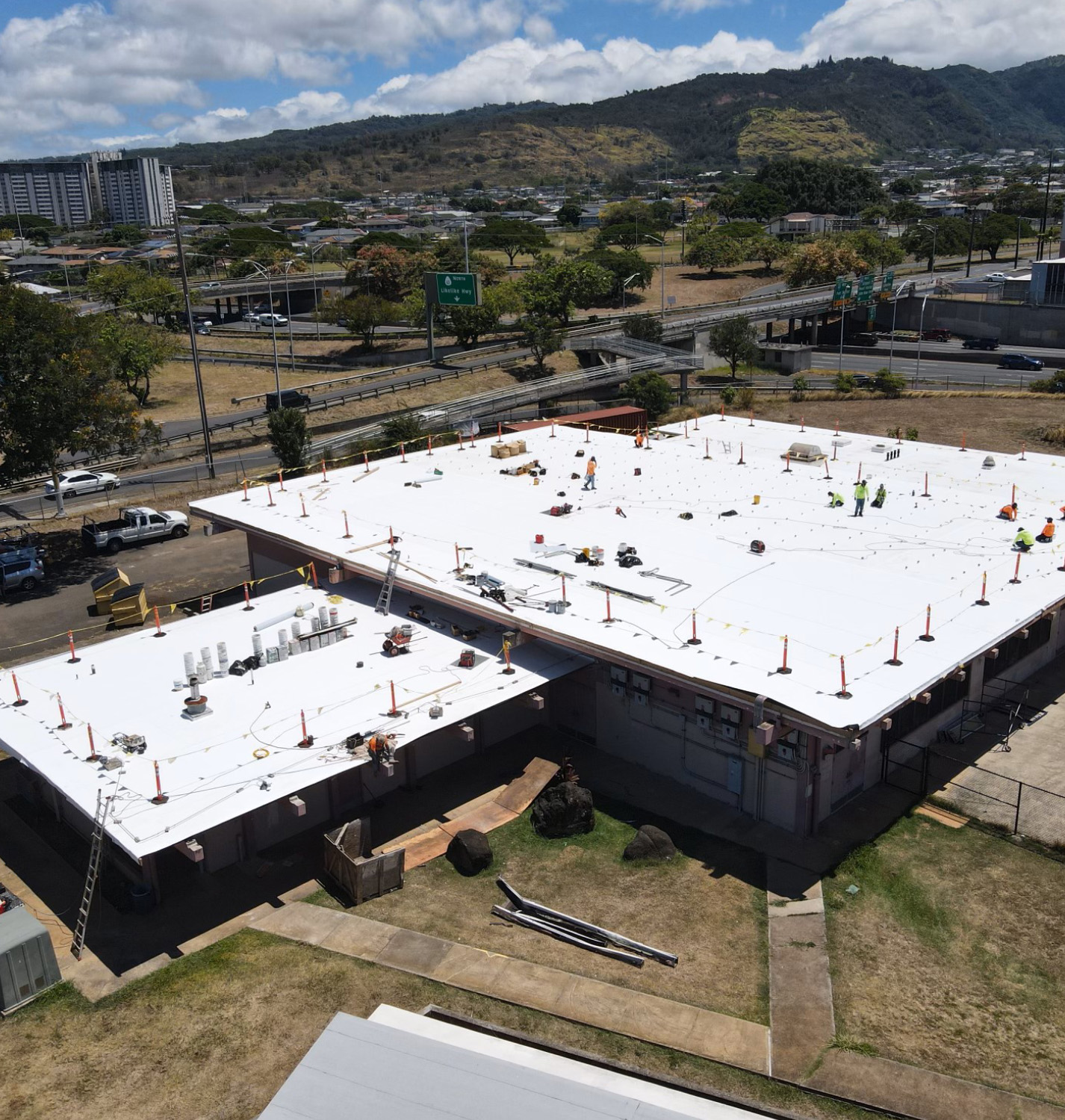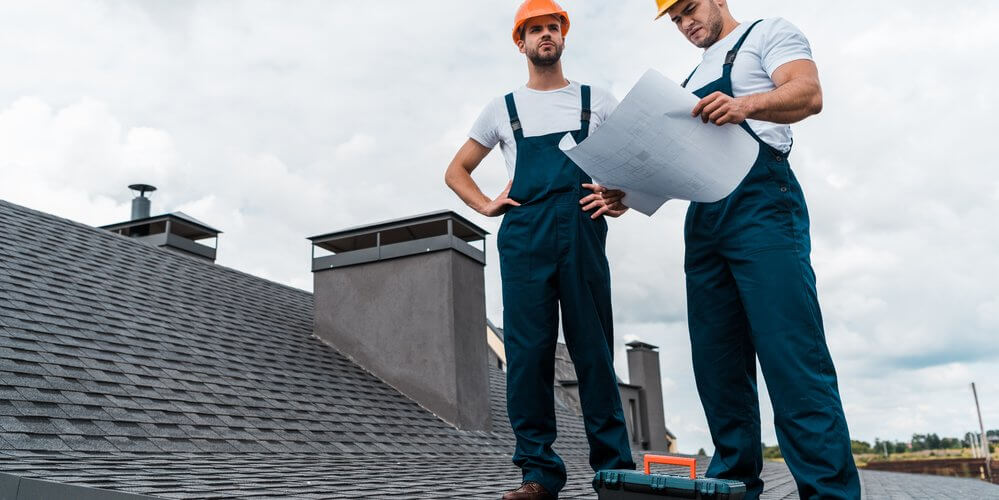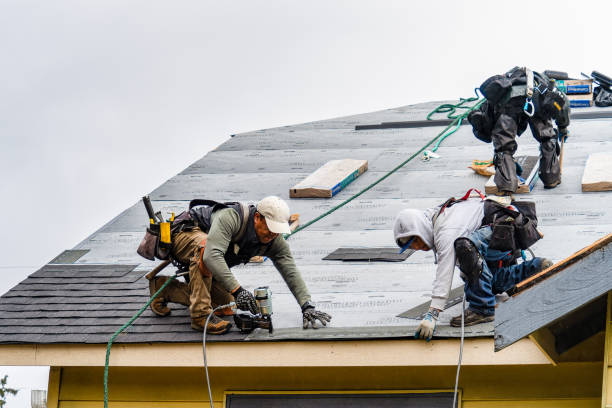Usual Fixings in Roof Covering That Every Property Owner Ought To Recognize
Roof leakages, shingle damages, and stopped up rain gutters can all compromise your home's honesty. What actions can you take to guarantee your roof remains in leading condition?
Identifying Roof Leakages
How do you know if your roof covering is dripping? Start by examining your ceilings and wall surfaces for water spots or discoloration. If you see dark places or peeling paint, that's a warning. Next off, check your attic room. Try to find damp insulation or water droplets on light beams, which can indicate a leakage. Throughout rainfall, check and order a flashlight for any indications of moisture. Pay interest to the roof's slope and valleys, as these locations typically accumulate water.
Don't neglect to examine your roof covering from the outside. Seek missing or broken tiles, as they can create entry points for water. Furthermore, examine flashing around vents and chimneys; harmed blinking can bring about leaks. If you think a leakage, it's critical to act rapidly. Ignoring the issue can result in a lot more extreme damages and expensive repair services down the line. Trust fund your instincts and investigate even more if you see any warning indications.
Tile Damages and Replacement
When it comes to roof covering, tile damages can result in bigger concerns otherwise dealt with immediately. You'll want to recognize the various kinds of damage and know the actions for changing your roof shingles. Let's discover what you need to do to maintain your roof covering in top shape.
Types of Shingle Damages
Although tiles are developed to endure the components, numerous types of damage can compromise their stability over time. One typical concern is crinkling, where the sides or edges of the shingles lift up, commonly due to age or inappropriate installation. Being aware of these types of shingle damage allows you to address issues quickly and preserve your roofing's problem.
Substitute Process Steps
Replacing damaged shingles involves a systematic approach to assure your roof covering continues to be sturdy and safety. Beginning by determining the damaged shingles-- check for splits, crinkling, or missing out on pieces (oahu roofing). Once you've pinpointed the problem locations, collect your materials: new tiles, roof covering nails, and a hammer
Next, meticulously eliminate the harmed roof shingles, making certain not to disrupt the surrounding ones. With these actions, you can restore your roof's honesty and prolong its lifespan.
Clogged Gutters and Downspouts
Clogged up gutters and downspouts can cause serious roof problems if left unattended. It prevents water from streaming away from your roofing and structure when debris builds up. This can trigger water to swimming pool on your roof, enhancing the danger of leakages and damages to your shingles. In time, the weight of the standing water can likewise bring about drooping and structural issues.

Remember, preserving clear gutters is crucial for securing your home's roof and total integrity. Normal checks will conserve you cash and trouble down the line, guaranteeing your roof system operates appropriately.
Blinking Issues
When it involves your roofing system, blinking plays a vital duty in avoiding leakages. You should know the different kinds of flashing materials and the usual problems that can occur. Recognizing just how to fix these problems can conserve you money and time down the line.
Kinds Of Flashing Products
Aluminum blinking is light-weight, rust-resistant, and simple to mount, making it prominent for many roofings. If you're looking for adaptability, rubberized flashing can adjust to various roofing forms, offering solid seals. Choosing the ideal blinking material can considerably boost your roofing system's durability and performance, so be sure to evaluate your alternatives carefully.
Typical Blinking Troubles
Also the finest flashing can encounter problems over time, leading to possible leakages and damage. If the blinking isn't fitted comfortably against the roof, water can leak beneath, triggering rot and mold. Another trouble is deterioration, particularly with metal flashing, which can damage over time due to direct exposure to the aspects.
Flashing Repair Strategies
Addressing blinking problems promptly can protect against more damage to your roofing system. If you notice any kind of splits or leaks, it's important to act fast. Beginning by checking the flashing around smokeshafts, vents, and valleys for any type of signs of damage. You can usually fix it with roofing concrete or sealant if it's damaged. For even more significant damages, consider changing the blinking completely. Get rid of the old flashing, making certain the area is clean, and after that install the new flashing, protecting it with nails and using sealant. Always look for appropriate overlap to protect against water invasion. Normal upkeep and evaluations can assist capture these issues early, conserving you time and cash over time. Don't wait up until it's also late!
Air Flow Troubles
When your roof lacks appropriate air flow, it can cause a host of troubles that endanger its integrity and your home's comfort. Poor ventilation traps warm and wetness in your attic click site room, creating tiles to deteriorate faster and promoting mold growth. This can enhance your energy bills as your a/c system functions overtime to preserve a comfortable temperature.

Routinely inspecting your air flow system is critical, especially after serious weather condition or adjustments in the periods. Do not wait to call a roof covering professional if you find your roof isn't ventilated correctly. They'll assist ensure your roofing remains in leading problem, protecting your investment and enhancing your home.
Roofing System Punctures and Holes
Poor ventilation isn't the only threat to your roof covering's honesty; roofing leaks and holes can lead to serious troubles. These openings can enable water to leak into your home, creating mold and mildew, structural damages, and pricey repair services. You may not even see a slit up until it's too late, specifically if it's little or hidden under roof covering products.
Regular inspections are crucial. Examine your roofing after heavy tornados or extreme weather, as particles can conveniently produce punctures. If you detect any type of holes, do not be reluctant to act. You could be lured to spot them up yourself, yet it's commonly best to call an expert. They can guarantee a correct repair work and protect against additional damages. Keep in mind, addressing roofing punctures and openings quickly shields your home and saves you cash in the future. Keep your roof in leading condition by remaining vigilant concerning its upkeep.
Moss and Algae Development
Moss and algae development can silently take hold on your roof, triggering substantial issues with time. These organisms flourish in moist, shaded locations, usually resulting in an accumulation of dampness that can deteriorate roofing materials. It's an indicator that you need to act rapidly. if you observe environment-friendly touches or spots.

You can get rid of moss and algae using a mix of water and bleach or by employing a specialist. Installing zinc or copper next page strips along the ridge of your roofing system can likewise hinder future development. Staying proactive will assist keep your roof's integrity and avoid costly fixings down the line.
Regularly Asked Questions
How Typically Should I Check My Roof Covering for Concerns?
You should inspect your roof at the very least twice a year, preferably in spring and fall. Also, check it after severe weather events. Normal inspections aid you capture possible problems before they end up being costly repairs.
Can I Perform Roof Services Myself?
You can carry out roof covering repairs on your own, yet it's crucial you analyze your abilities and security. If you're uncertain, consider working with you could check here a specialist. When to seek aid for a lot more complex issues., constantly prioritize safety and security and understand.
What Are the Signs I Required a Roofing Replacement?
You'll recognize it's time for a roofing replacement if you detect considerable leakages, considerable roof shingles damage, drooping areas, or noticeable mold. Do not wait too long; resolving these indications early can conserve you money over time.
How much time Does a Roofing System Fixing Normally Last?
A roofing system fixing normally lasts anywhere from 5 to 15 years, depending on products and problems. oahu roofing. You need to monitor its condition routinely to capture any prospective concerns prior to they escalate right into larger problems
What Is the most effective Period for Roofing System Fixes?
The best season for roofing fixings is generally springtime or loss. Throughout these times, temperatures are mild, and climate condition are more stable, enabling service providers to work effectively and guaranteeing your roof covering gets the attention it needs.
Final thought
By frequently examining for leaks, tile damages, and stopped up rain gutters, you're securing your home from significant concerns. Maintaining an eye on these variables will certainly assist keep your roofing's stability and prolong its life-span, ultimately protecting your financial investment for years to come.

Changing harmed roof shingles includes a methodical technique to ensure your roofing stays safety and long lasting.Addressing flashing issues without delay can protect against further damages to your roof.Poor air flow isn't the only risk to your roofing system's stability; roofing system leaks and openings can lead to severe troubles.